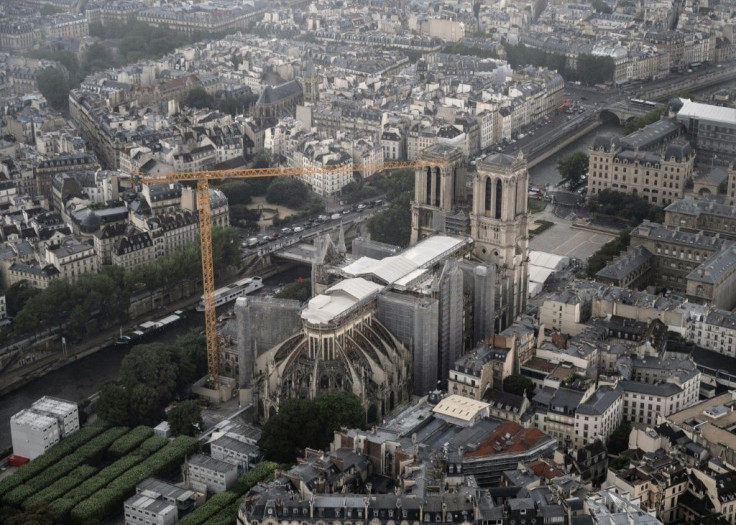Human-Shaped Sarcophagus Found Beneath Notre-Dame Cathedral

Several tombs and a human-shaped sarcophagus likely dating from the 14th century have been found by archaeologists at the Notre-Dame cathedral in Paris.
The latest discovery offers a new insight into the history of the building. Notre-Dame, which dates back to the 12th century, is currently under reconstruction after a devastating fire in 2019. The roof and spire of the historic Parisian church were destroyed when a fire swept across the structure.
The burial sites “of remarkable scientific quality” were unearthed during preparatory work for rebuilding the ancient church’s spire at the central spot, France's Culture Minister Roselyne Bachelot said Monday.
Workers were able to glimpse inside using a tiny endoscopic camera, and found what appears to be a perfectly mummified corpse, complete with hair and clothing, the Daily Beast reported, citing AFP.
"We were able to send a small camera inside which showed cloth remains, organic matter such as hair and plant remains," Christophe Besnier from France's National Archaeological Institute said, according to Reuters. "The fact that these plants are still there indicates that the contents have been very well preserved."
Reporters from the AFP visited the site Tuesday, and saw archaeologists working with precision, trying to clean and excavate the sculptures emerging from the ground, including a pair of carved hands, Daily Beast reported The bust of a bearded man and some sculpted vegetables, with traces of paint still visible, had been removed.
Other artifacts included remnants from the original church. These remnants have been restored numerous times in its 800-year existence.
Dominique Garcia of the National Institute of Archaeological Research said the discovery will provide us with a deeper understanding of funeral practices in the Middle Ages.
"You can glimpse pieces of fabric, hair and above all a pillow of leaves on top of the head, a well-known phenomenon when religious leaders were buried," Besnier said, according to AFP. "The fact that these plant elements are still inside means the body is in a very good state of conservation."
The archeologists at the site have been given until March 25 to finish their work before the reconstruction project resumes. Authorities plan to reopen the cathedral in 2024.

Photo: AFP / BERTRAND GUAY





















